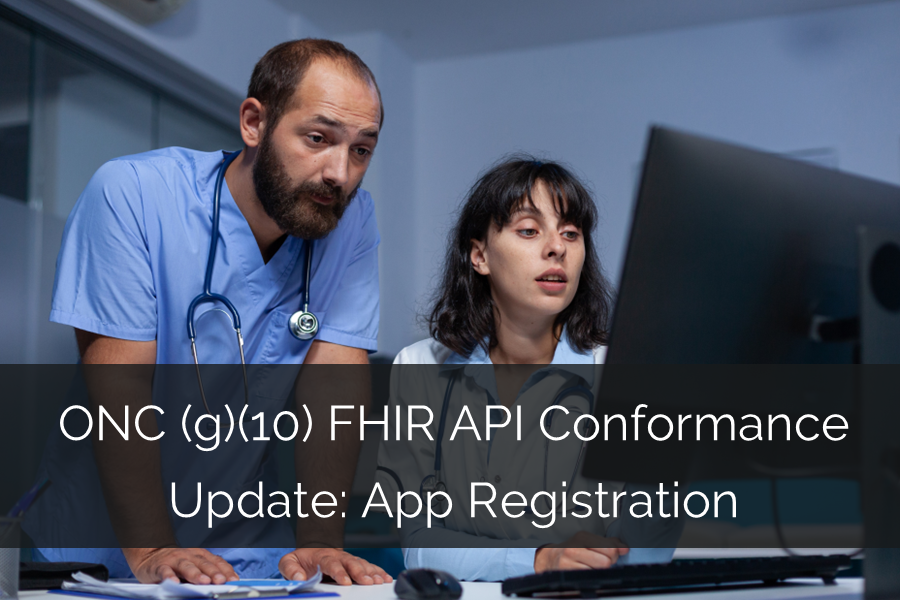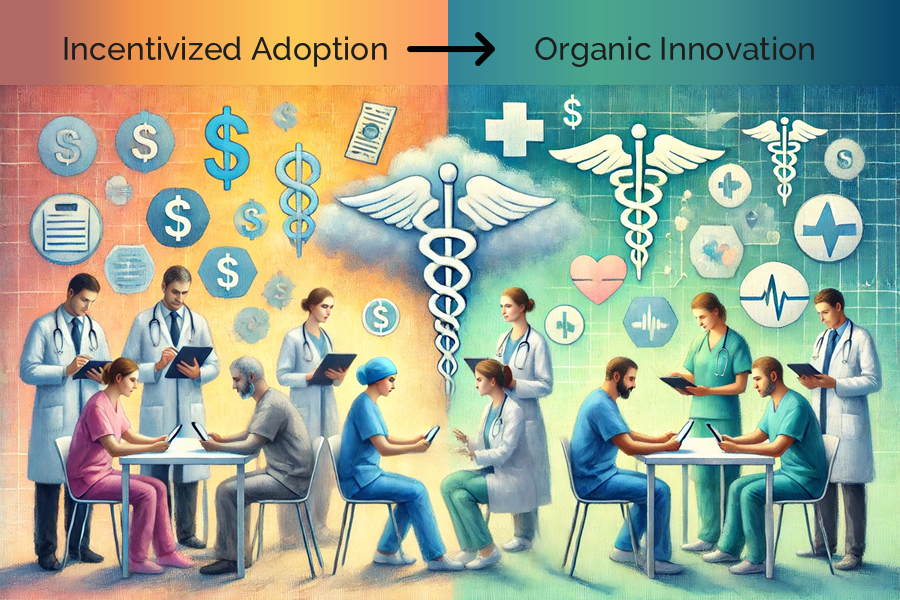(g)(10) Checklist: 10 things to check for in a FHIR® API
Do you have a game plan ready for the fast-approaching December 31st, 2022, deadline to have a (g)(10) FHIR-based API in place? Remember, (g)(10) is only a small piece of the multi-dimensional Cures Act certification requirements for EHRs and providers. As you progress through the Build vs. Buy decision for the Cures Ready API, it is important to consider how the FHIR-API must tie into the complete API requirements. It must include the (g)(7) and (g)(9) along with the (g)(10) criteria. Additionally, it should also satisfy the (b)(10) EHI Bulk Data export criteria.
Due to the complexity, it takes at least 8-12 months to develop, QA, prepare and then do the testing with the ONC-ATB, and then get the FHIR-based (g)(10) feature in production. If your development team is asking the right questions you’ll agree that with less than five months left, the “Build” option is most likely off the table. When you look at the complete API requirement you will discover that a “check-the-box” single criteria component not only misses some very critical parts of the requirements, but also shifts the remaining burden, liability, and extra costs onto you. That only leaves you with the “Buy” option.
To assist with your efforts to achieve a complete Cures Ready status, we have assembled a comprehensive checklist of items that you should consider for making an informed decision.
1. Provision FHIR® Server(s)
(g)(10) FHIR API Checklist by Darena Solutions
o How will you provision the FHIR servers?
Will all the practices be hosted on a single FHIR server, or will each practice have its own server?
How fast can these FHIR servers be provisioned?
What security protocol is in place?
Is your HIPAA/Cyber Insurance updated to include this effort?
If storing the data, is allowing outside access to additional PHI/eHI within your domain?
Have you developed an expected Service Level/Uptime?
2. Manage Permissions
o How will you manage permissions?
How will you determine permissions granted, denied, or changed status?
Who will assume responsibility for the ongoing API permission management controller?
3. Upload Patient Data in the USCDI Format
o. Have you validated your C-CDA to the USCDIv1 data elements?
How was this completed?
Have you updated your CHPL listing to reflect that change?
What process will be used to upload the patient PHI data?
How frequently will the data be uploaded?
How close to Real-Time Access are you?
4. Create Patient Accounts and Send Invites
o What method are you using to create patient/authorized representatives accounts?
o Who is responsible for creating and sending these invites?
o What formats will you support for the invites?
Can the Invites be other than by email? (SMS, QR code)
Are the invites personalized with clear instructions to minimize confusion?
Can you allow Username and Password reset? If yes, is it automated or manual?
5. Manage Developer Portal
o Do you have a Developer Portal to support SMART on FHIR apps?
o How are the third-party apps approved on the developer portal?
Note: The Developer Portal is an ONC requirement for a complete Cures Ready solution.
6. Manage Ongoing Updates
o What is your plan to manage ongoing updates?
7. Satisfy Provider to Patient Exchange MIPS PI Measure
o Does your EHR logic account for the MIPS Provider to Patient Access PI measure?
8. Manage Ongoing Updates and Conduct Real World Testing (RWT)
o Who has the responsibility to create the annual RWT plan?
o Who will conduct the RWT with your end-users?
o Who will write the report for RWT Plan and RWT Testing to submit to your ONC-ATB?
9. Support the Addition of EHI to Meet the October 6, 2022 Requirements
o How will you add support for moving from PHI to EHI?
o Have you considered the requirement for Bulk Export – (b)(10)?
10. Calculate Cost in Use
o Have you calculated the TRUE Cost in Use for the fully Cures Ready FHIR-based API solution?
Development Hours
Including prep time if you would need to test yourself
Required version updates (FHIR ver. 4+, USCDI v2+)
Certification
Certification fee due to the ONC-ATB
Hosting Cost
Server and Insurance
Licensing Costs (e.g., Database Server)
As you can see, there are multiple moving parts to each of the steps above. We have gone through the process and can provide you with a turn-key solution as soon as your C-CDA is updated to the USCDI-v1 specifications. If you decide to use the BlueButtonPRO fully certified solution, this is the only thing that you need to do. We take it from there. It allows you to grow into the new world of Interoperability and not grow out of a “check-the-box” component. We provide you with a solution to satisfy the Cures Act role for each Actor.
Do you want to reduce this long checklist to a single item?
Set up a time to talk to us











